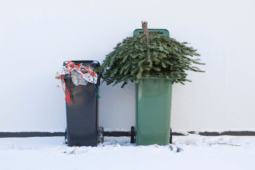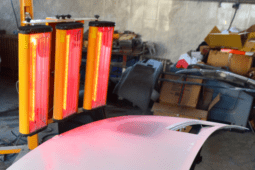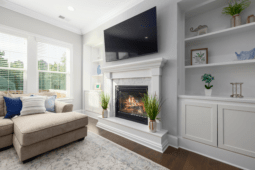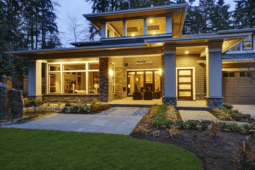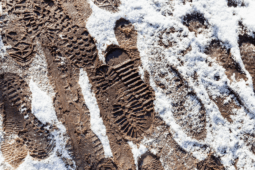How to: Make a DIY Rustic State Map Wall Art from a Broken Pallet
![credit: David [manmadediy.com] Busted Up Pallet](https://s3.amazonaws.com/manmadediy-uploads-production/photos/24728/untitled-2_large.jpg?1423464018) One of the great things about living in Northern California is the wide open spaces. There are so many great places to hike, climb, swim, and just enjoy in the expansive outdoors up here. Only a true Northern California resident can really understand how frustrating it is when people tell me how Northern California is San Francisco and then right above that is Oregon. Nope, there are hundreds of miles between SF and the border, and that expanse is my home.
One of the great things about living in Northern California is the wide open spaces. There are so many great places to hike, climb, swim, and just enjoy in the expansive outdoors up here. Only a true Northern California resident can really understand how frustrating it is when people tell me how Northern California is San Francisco and then right above that is Oregon. Nope, there are hundreds of miles between SF and the border, and that expanse is my home.
![credit: David [manmadediy.com] California Rustic Sign](https://s3.amazonaws.com/manmadediy-uploads-production/photos/24730/California%20Rustic%20(2)_large.jpg?1423464338)
I’ve been wanting to construct a large state map for my wall for a while, and I just happened to have a busted up pallet that needed to go. Here are the steps I took to make it happen:
![credit: David [manmadediy.com] Wood from Pallet](https://s3.amazonaws.com/manmadediy-uploads-production/photos/24729/California%20Rustic%20(3)_large.jpg?1423464237)
1. Disassemble the pallet – busting up a pallet is no small undertaking. They are made from durable nails, and are built strong enough to take a beating. Take your time and wear some good gloves to avoid getting spiked. To maximize the useable wood, go slow when pulling out the nails and avoid the urge to throw some muscle into it. A great tool to use is a flat bar which is nice to slip into the joints for some leverage. Take out the nails, and use a wire brush to get dirt and grime off the pieces. ![credit: David [manmadediy.com] Rough Pieces](https://s3.amazonaws.com/manmadediy-uploads-production/photos/24734/California%20Rustic%20(5)_large.jpg?1423464602)
2. Find and print a suitable picture – this applies to any pattern, find the rough picture and use a program like Paint.net, Sketch-up, or similar to size properly for the final dimensions. My pattern was 48″ tall by about 30″ wide. This prints out on multiple pages that have to be taped together to make the full size pattern (don’t worry about getting too perfect, it’s just a guide pattern and you will have the opportunity to fine tune it after cutting out). ![credit: David [manmadediy.com] Layout on Pattern](https://s3.amazonaws.com/manmadediy-uploads-production/photos/24731/California%20Rustic%20(6)_large.jpg?1423464428)
3. Lay out and cut backing board – The best way to get a clean pattern is to use a backing board, like 1/4″ plywood (also known as doorskin). Lay out the pattern on the plywood and staple/glue/tape it down. You may want to go thicker on the plywood if making a very large piece to make sure it’s stiff enough to stay together. The best way is to use spray-on adhesive which keeps the pattern in place while cutting, but staples or tape can work as well. Cut the board with a jigsaw and file down any rough areas until the pattern is perfect. (*Note – in the pictures I laid out the boards on top of the pattern to cut to rough dimensions first) ![credit: David [manmadediy.com] Gluing on the Backing Board](https://s3.amazonaws.com/manmadediy-uploads-production/photos/24733/California%20Rustic%20(8)_large.jpg?1423464556)
4. Lay out pieces to rough design – Lay out the pieces of wood on top of the backing board in a rough pattern, and move around until it looks good and fully covers the board. Then, flip over the entire pattern so that the backing board is on top. Make any final adjustments then spread a nice layer of glue on the boards and the backing board. Use pin nails or staples to help hold it all together. ![credit: David [manmadediy.com] Pinning on Backing Board](https://s3.amazonaws.com/manmadediy-uploads-production/photos/24732/California%20Rustic%20(7)_large.jpg?1423464468)
5. Cut out the final design – Once the glue is dry and the pattern is solid, it’s time to cut the pieces. Set up the design face down on two sawhorses with a few support boards and carefully start cutting out the design to match the backing board. After cutting, use sandpaper to smooth out the edges and sand the surfaces to the desired finish. I kept mine pretty rough to preserve the rustic look. (*Note – in the pictures I used a few pieces of backing board stitched together. Don’t do this, it was a pain and didn’t work very well.) ![credit: David [manmadediy.com] Cutting Out California](https://s3.amazonaws.com/manmadediy-uploads-production/photos/24735/California%20Rustic%20(1)_large.jpg?1423464705)
6. Finish and seal – I put a coat of polyeurethane with a slight red tint on and let it dry before a final sanding with 220 grit to smooth out and give a matte finish. Adding a few picture hangers was all it took to call it done. ![credit: David [manmadediy.com] Finished Rustic California Sign](https://s3.amazonaws.com/manmadediy-uploads-production/photos/24730/California%20Rustic%20(2)_large.jpg?1423464338)
Here are a few things I actually did wrong while making this piece, hopefully you can learn from my mistakes!
1. Use a single piece of backing board. I used three smaller pieces because it was what I had in the shop, this resulted in a pretty flimsy piece that had to be over-stapled to hold together at all. It was also very difficult to cut out the final pieces because the jigsaw kept vibrating the entire board during any tight cuts.
2. Use plenty of tape to hold the pattern together. I used masking tape sparingly to hold the pattern together, and that made it difficult to keep all 25 pages together for the entire project. I ended up splitting the pattern into three pieces to make them more manageable.
3. Go big, but plan for your space! Making large pieces is fun, and they are great to anchor big spaces. But be sure to measure first so you don’t end up with a piece too big for the space. I went to hang up the map, and it was way too big for the wall, so I’m still trying come up with an alternative spot.


